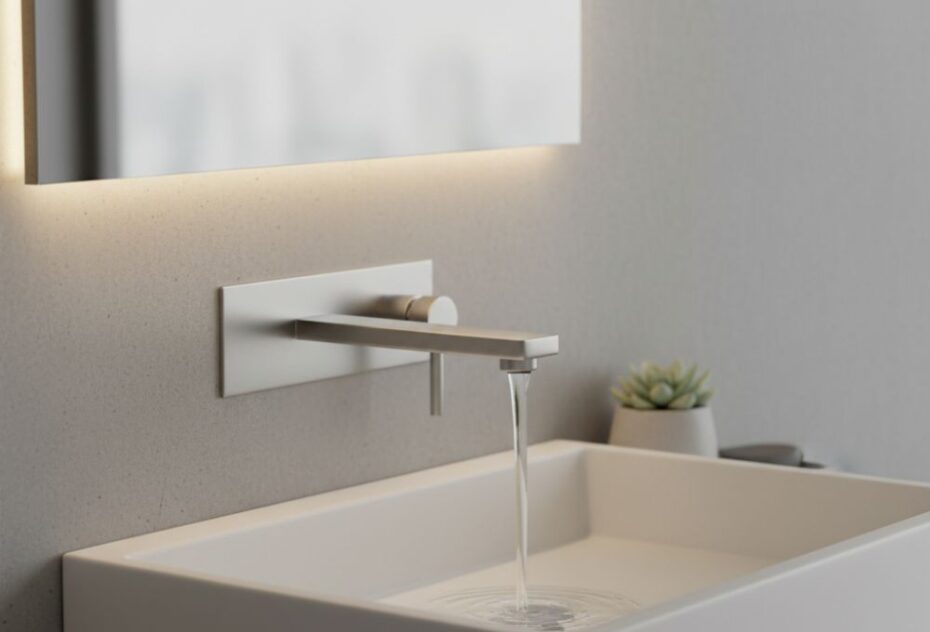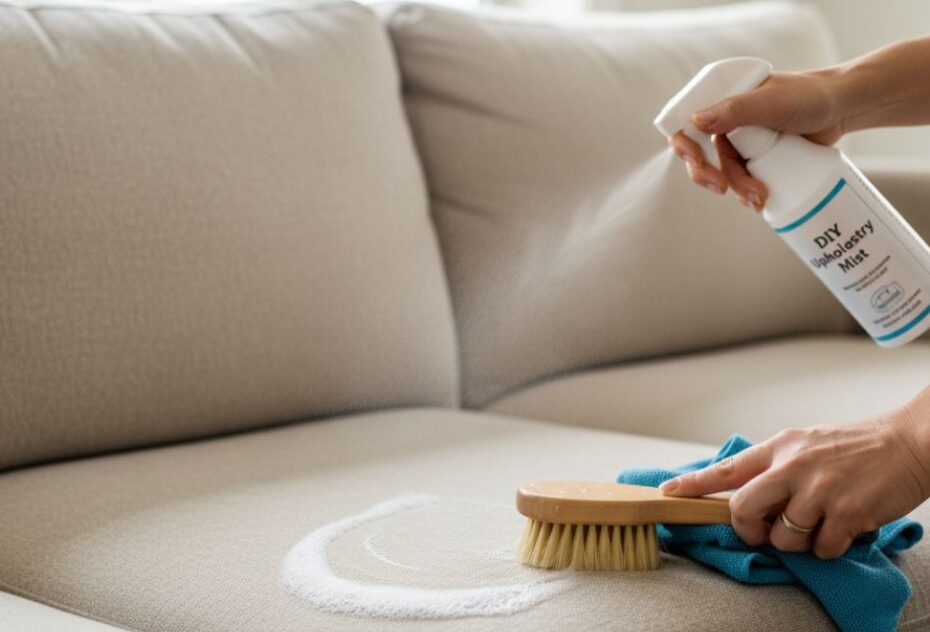How to Clean Stainless Steel Sink: Best DIY Guide 2025
- by Parul Yadav
- August 7, 2025
- 0
- 281

If you’re a DIY enthusiast or a clean-home junkie like me, you’ve probably searched for the best way to clean stainless steel sink more than once. Whether you’re scrubbing off food grime, removing hard water spots, or trying to bring back that mirror shine, knowing how to clean stainless steel sink properly will not only keep it spotless but also extend its lifespan.
This guide shares step-by-step instructions, tips I’ve personally tested, and the most effective cleaning strategies, using simple household ingredients. We’ll also tackle common issues like rust stains, cloudy finishes, and water spots on stainless steel sink without using harsh chemicals.
Did You Know?
Source: The average stainless steel sink, with proper maintenance, can last 15 to 30 years — but failure to follow basic cleaning steps (like avoiding bleach or steel wool) can cut that lifespan in half.
Why Stainless Steel Sink Cleaning Is Essential
- Stainless steel sinks may resist rust and stains, but regular cleaning is necessary to preserve shine, reduce odor, and prevent damage from hard water and leftover food.
- Without daily and weekly cleaning, soap residue, limescale, and food particles can build up fast, making your sink look older than it is and much harder to maintain.
- Scratches will naturally happen, but by learning how to clean stainless steel kitchen sink properly, you can reduce visible marks and keep your sink surface polished longer.
- Cleaning your stainless steel sink regularly also reduces the risk of bacteria and mold, especially if you’re dealing with raw food or use your sink for food prep often.
- Trust me, once you master the right methods and discover the best tools and natural cleaners, maintaining your stainless steel sink cleaner routine becomes easy and even satisfying.
How To Clean Stainless Steel Sink: Daily Cleaning Routine in 3 Simple Steps
- After every use, I rinse the sink with warm water and mild dish soap to remove grease, crumbs, and coffee stains, which helps avoid water spots on stainless steel sink.
- I use a soft cloth or non-abrasive sponge to gently wipe the sink in the direction of the grain, keeping the finish smooth while applying a gentle stainless sink cleaner.
- Finally, I always dry the sink thoroughly with a microfiber cloth to prevent calcium deposits or streaks and make my stainless steel sink shine like it was newly installed.

Weekly Deep Cleaning Method: Step-by-Step DIY for How To Clean Stainless Steel Sink
Knowing how to clean stainless steel sink once a week with a more thorough approach will prevent long-term staining and reduce dullness caused by water minerals and food.
Step 1: Clear and Prep the Sink
Begin by removing any dishes, sink grids, and soap trays to give yourself full access to every corner, especially around the drain where stainless steel sink cleaner is most needed.
Step 2: Sprinkle Baking Soda Evenly
With the sink slightly damp, sprinkle a generous layer of baking soda across the surface. Baking soda acts as a natural abrasive that doesn’t scratch stainless steel kitchen sinks.
Step 3: Add Dish Soap or Vinegar
I drizzle a few drops of dish soap (or white vinegar for harder stains) and mix it into the baking soda until it forms a paste-like cleaner for stainless steel sinks.
Step 4: Scrub Gently With Grain
I gently scrub in circular motions using a soft sponge or cloth, always in the direction of the grain. This preserves the finish while enhancing the shine of stainless steel sinks.
Step 5: Rinse and Inspect
I rinse everything thoroughly with warm water, making sure no paste residue remains. If I missed a spot, I repeat the process until the sink looks stainless again.
Step 6: Dry and Buff to Shine
For the finishing touch, I wipe the sink dry with a microfiber towel. This not only prevents new water spots but also helps the stainless steel kitchen sink look freshly polished.
How to Remove Stains from a Stainless Steel Sink
- When I notice rust-like spots or hard water buildup, I apply white vinegar with a soft cloth, let it sit for five minutes, then gently scrub and rinse, a natural stainless sink cleaner.
- For greasy residue or cloudy finishes, I use a toothbrush with baking soda and warm water, which helps restore shine without damaging the surface of stainless steel kitchen sinks.
- If stains return regularly, I check the faucet aerator for metal debris or mineral buildup, which is a common cause of rust-like spots in even the best stainless steel sink setups.
- Sometimes, I even polish the sink afterward with a drop of olive oil or flour. Buffing it into the steel using a soft cloth makes the stainless steel sink shine brilliantly again.
- This approach not only removes stains but also works as a maintenance routine to keep your stainless steel kitchen sink cleaner for longer periods without chemical damage.
What You Should Never Do When Cleaning a Stainless Sink
- Avoid using steel wool, wire brushes, or harsh scouring pads because they scratch the surface and leave behind particles that can eventually rust your stainless steel kitchen sink.
- Bleach, ammonia, and other harsh chemicals may cause permanent damage, including pitting and corrosion. Never use these as your stainless steel sink cleaner.
- Do not leave standing water, tea, or coffee in the sink overnight. These liquids stain easily and cause those annoying water spots on stainless steel sink.
- Don’t use dish mats or rubber pads that sit in the sink for long periods. These trap moisture and soap scum, creating the perfect breeding ground for bacteria.
- Lastly, never store chemical cleaners under the sink in unsealed containers. Vapors can react with steel components, corroding both plumbing and stainless steel kitchen sinks.
Frequently Asked Questions (FAQs) About How To Clean Stainless Steel Sink
What’s the best way to clean stainless sink surfaces?
The most effective and safest method is using baking soda, warm water, and dish soap. Scrub gently in the direction of the grain, rinse thoroughly, and dry afterward.
How do you remove stains from stainless steel sinks?
Use white vinegar for mineral stains and baking soda paste for grime. For rust-colored spots, clean with a soft brush and then rinse and dry completely to avoid recurrence.
How to make stainless steel sink shine like new?
Once clean, buff the surface using a dry microfiber cloth. You can also apply a little olive oil or flour to polish and make your stainless steel sink shine instantly.
What to use to clean stainless steel sink safely?
Use mild dish soap, baking soda, white vinegar, and soft cloths. Avoid any abrasive or chemical-based stainless steel sink cleaner that may damage the finish or cause corrosion.
How to deal with water spots on stainless steel sink?
Prevent them by drying the sink after each use. If they appear, wipe them off with vinegar and then rinse with water to restore your stainless steel kitchen sink’s natural shine.
Final Thoughts: Keep Your Stainless Steel Sink Looking Its Best
Knowing how to clean stainless steel sink is more than just a cleaning hack, it’s a form of kitchen maintenance that protects your space and hygiene. I’ve learned that with consistent care, safe ingredients, and the right techniques, your stainless steel kitchen sink can look spotless and professional for years.
From removing stains to polishing and avoiding common mistakes, following these tips makes a huge difference. Whether you’re in South Dakota or anywhere else, these cleaning strategies are easy to follow, cost-effective, and highly effective, and they’ll make your sink the crown jewel of your kitchen.












